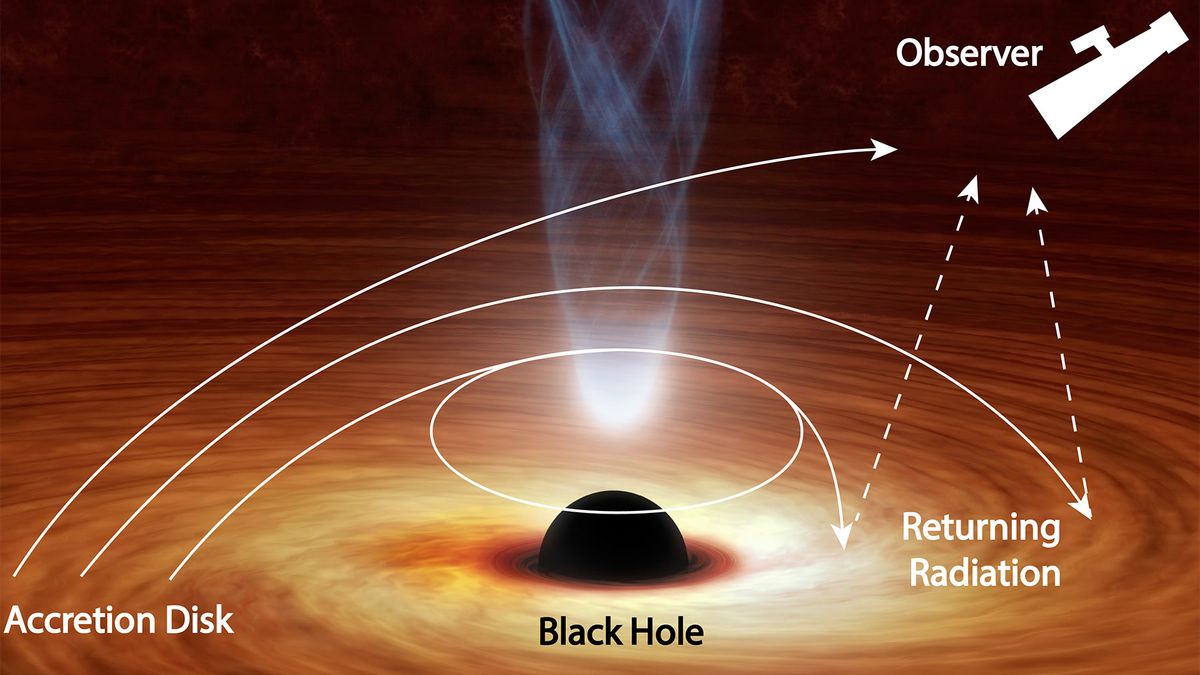Black hole bends escaping light 'like a boomerang'
First Published
Even light can't resist the pull of these irresistible cosmic objects.
Related: Stephen Hawking's most far-out ideas about black holes
They modeled the black hole's accretion disk and its corona — a lower-density gas zone very close to the black hole — using data captured by the Rossi X-ray Timing Explorer, a now-defunct NASA satellite mission that investigated black holes, neutron stars and other X-ray emitting objects between 1995 and 2012.
"Typically, what we study is light that comes from that gas" — the corona — "and it bounces off of this disk that's spiraling toward the black hole," said lead study author Riley Connors, a postdoctoral researcher in physics at the California Institute of Technology's Cahill Center for Astronomy and Astrophysics in Pasadena, California.
Normally, the team studies light "coming from that corona and hitting the disk, bouncing off, and then arriving at our telescopes. That's something we've been studying for a long time," Connors told Live Science.
This time, however, some of the light bouncing off the black hole's disk appeared to originate in the disk itself rather than in the corona; it was then dragged back toward the black hole before bouncing away.
"The thing that we found, that was predicted in the 1970s, is that you could see light that comes from the disk bent all the way back onto itself," Connors said.
Light from different regions around the black hole has distinctive X-ray signatures that tell scientists where the light came from. When the study authors looked at the data for XTE J1550-564, they saw light that was reflected from the black hole but had emission "fingerprints" that didn't quite match those in light that came from the corona, Connors said. The researchers then turned to computer models to explain the anomaly.
Putting a new spin on black holes
This discovery could help scientists confirm other elusive aspects of black holes, such as how fast they spin. Researchers already understand how an accretion disk around a black hole behaves. By adding this boomeranging light to their computer models, astrophysicists can then calculate a black hole's rotation speed based on how much of the light is bending and bouncing back, Connors explained.
"It's perhaps a more reliable way for us to measure how fast the black holes are spinning," he said. '"
Though this phenomenon has been documented to date only in the XTE J1550-564 system, this is likely not the only black hole where light performs these unusual gymnastic feats, Connors said.
"We're starting to look at data from other black holes; we have data from multiple X-ray satellites for dozens of these systems in our own galaxy," he said. "We think that we should see this in many other sources."
The findings were published online March 20 in The Astrophysical Journal.







0 Comments
Be first one to comment